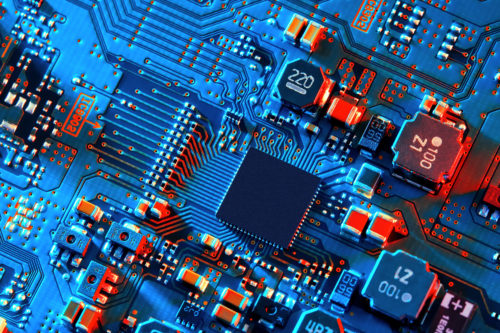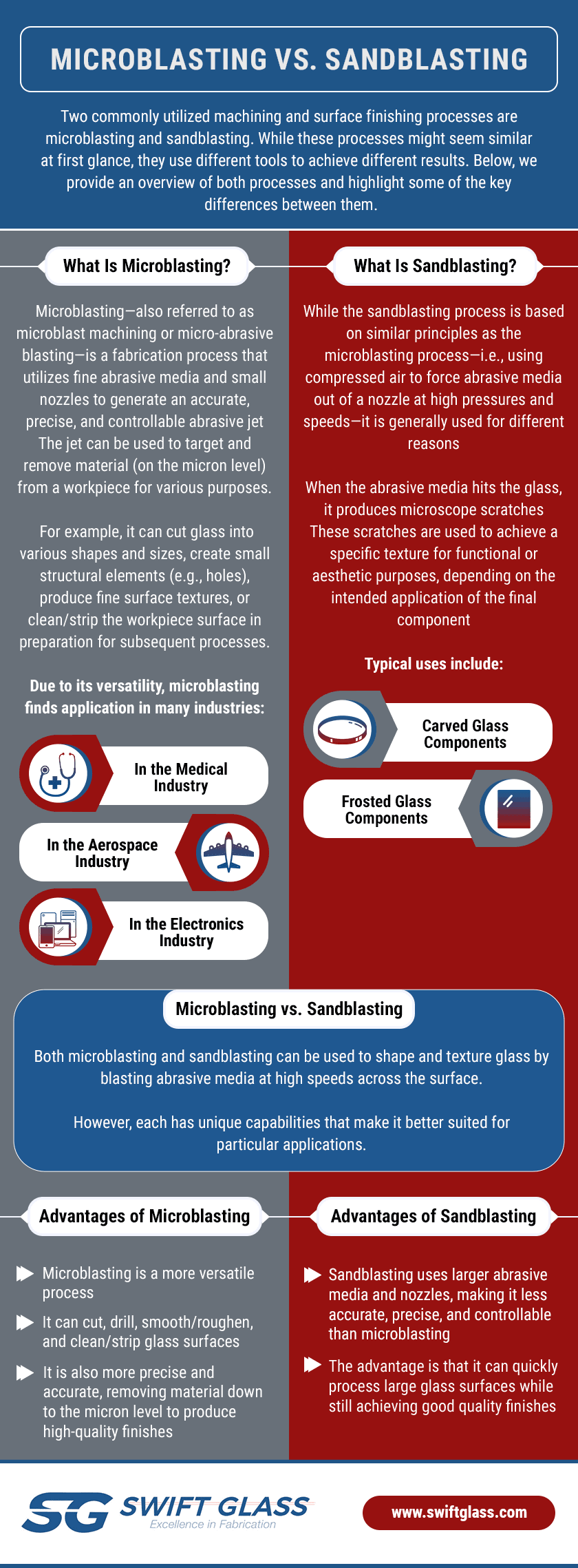At Swift Glass, we specialize in the fabrication of quality glass components. We offer a range of fabrication capabilities to ensure the parts and products we deliver fully meet our customers’ specifications and standards. For example, our machining and surface finishing services allow us to carefully alter the shape and/or surface of very small to very large glass materials.
Two commonly utilized machining and surface finishing processes are microblasting and sandblasting. While these processes might seem similar at first glance, they use different tools to achieve different results. Below, we provide an overview of both processes and highlight some of the key differences between them.
What Is Microblasting?
Microblasting—also referred to as microblast machining or micro-abrasive blasting—is a fabrication process that utilizes fine abrasive media and small nozzles to generate an accurate, precise, and controllable abrasive jet. The jet can be used to target and remove material (on the micron level) from a workpiece for various purposes. For example, it can cut glass into various shapes and sizes, create small structural elements (e.g., holes), produce fine surface textures, or clean/strip the workpiece surface in preparation for subsequent processes.
Due to its versatility, microblasting finds application in many industries. For example: 
- In the medical industry, it is used to remove excess or residual material from manufacturing tools (e.g., molds) and manufactured components (e.g., implants).
- In the aerospace industry, it is used to clean off residues from components such as circuit boards and create surface textures on components such as connectors and HUD optics.
- In the electronics industry, it is used on electronic components to cut holes for easier assembly and create textures for improved bond adhesion.
What Is Sandblasting?
While the sandblasting process is based on similar principles as the microblasting process—i.e., using compressed air to force abrasive media out of a nozzle at high pressures and speeds—it is generally used for different reasons. When the abrasive media hits the glass, it produces microscope scratches. These scratches are used to achieve a specific texture for functional or aesthetic purposes, depending on the intended application of the final component.
In contrast to microblasting, sandblasting is typically reserved for cutting and texturing applications. Typical uses include:
- Carved glass components
- Frosted glass components
Microblasting vs. Sandblasting
Both microblasting and sandblasting can be used to shape and texture glass by blasting abrasive media at high speeds across the surface. However, each has unique capabilities that make it better suited for particular applications.
Advantages of Microblasting
Microblasting is a more versatile process. It can cut, drill, smooth/roughen, and clean/strip glass surfaces. It is also more precise and accurate, removing material down to the micron level to produce high-quality finishes.
Advantages of Sandblasting
Sandblasting uses larger abrasive media and nozzles, making it less accurate, precise, and controllable than microblasting. The advantage is that it can quickly process large glass surfaces while still achieving good quality finishes.
Microblasting Services at Swift Glass
Want to learn more about microblasting and sandblasting? Ask the glass fabrication experts at Swift Glass! We maintain advanced microblasting capabilities as well as sandblasting capabilities to produce quality glass components for our customers. If you have a question or concern about either process, we can answer or address it. For all of your glass machining and/or finishing needs, request a quote to discuss your specifications and standards.




